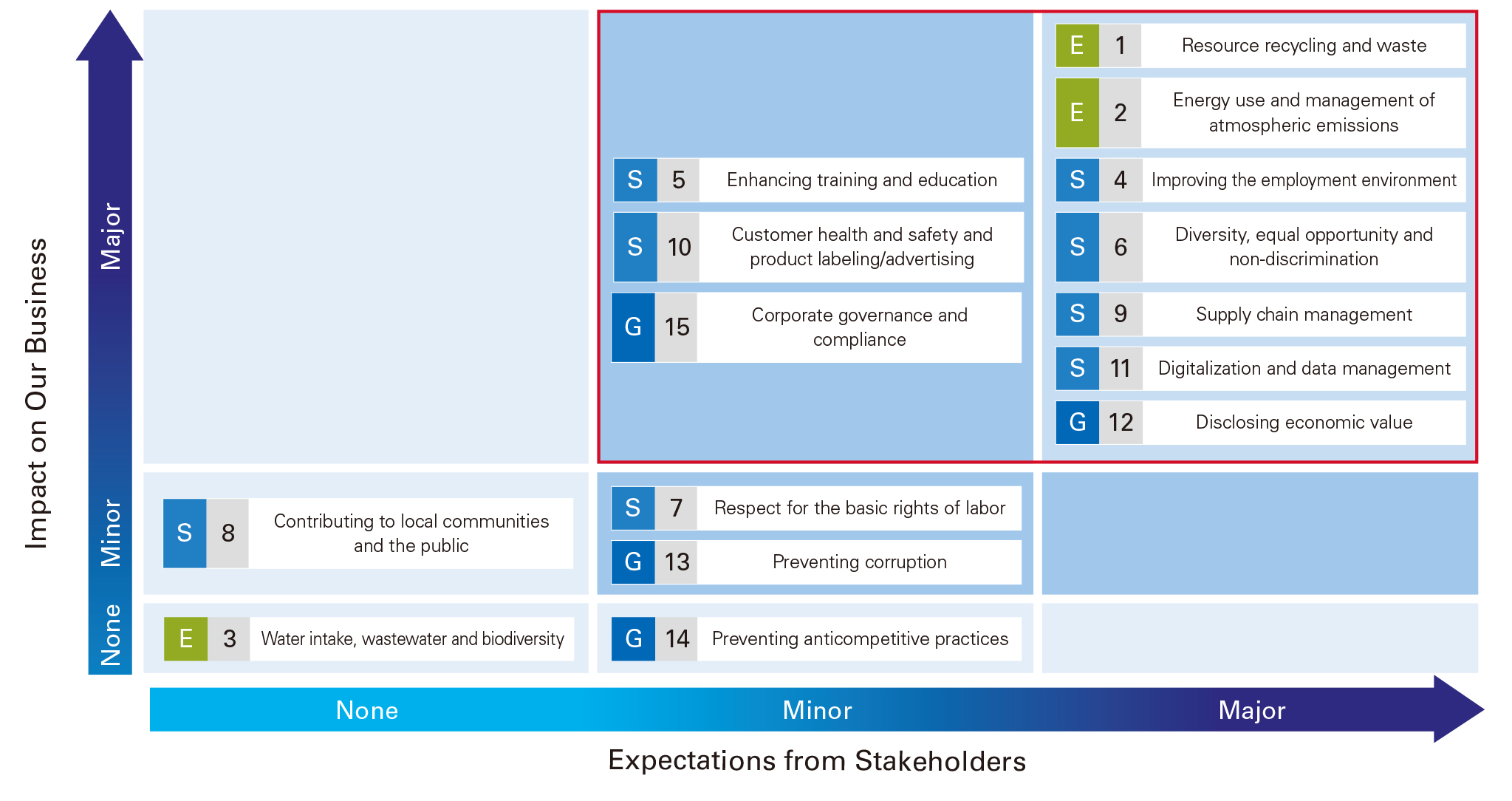-
TOP
- Sustainability
- Sustainability at the Yamazen Group
- Material Issue Identification Process
Material Issue Identification Process
When identifying these material issues, we listened to the expectations and opinions of institutional investors, business partners and other stakeholders on the topics they consider important for Yamazen from an ESG perspective, as well as their thoughts on how to resolve those issues through our business activities. We then held thorough, in-depth discussions inside the Company.
Step1
Select possible material issues
Utilizing international ESG disclosure standards set by the Global Reporting Initiative (GRI), the Sustainability Accounting Standards Board (SASB), and others, we extracted a wide range of possible material issues in areas such as our impact on the economy, environment, and society.
Step2
Analyze relevance to our business and prioritize each element
We conducted surveys with employees domestically and internationally on the relevance of each potential material issue to our business. After extensive discussions, we prioritized each element and then singled out proposed material issues.
Step3
Conduct interviews with external experts and members of management
We conducted interviews with external experts, including institutional investors, business partners, representatives from banks and securities companies, and outside directors.
Step4
Map the material issues
Based on the interviews from external experts and members of management, we prioritized high-priority items along the two axes of impact on our business and expectations from stakeholders.
Mapping of Material Issues
Focusing on the items in the red-bordered section of the map, we identified five material issues: expanding green business; digitalization to maximize customer value; realization of sustainable procurement and supply; realization of a rewarding workplace; and establishment of a transparent governance system.

Step5
Identify material issues
We consolidated the 10 high-priority items listed above into five highly related categories, thus identifying our material issues. For each material issue, we established goals, initiatives, and departments in charge, and created a system for promoting them.
